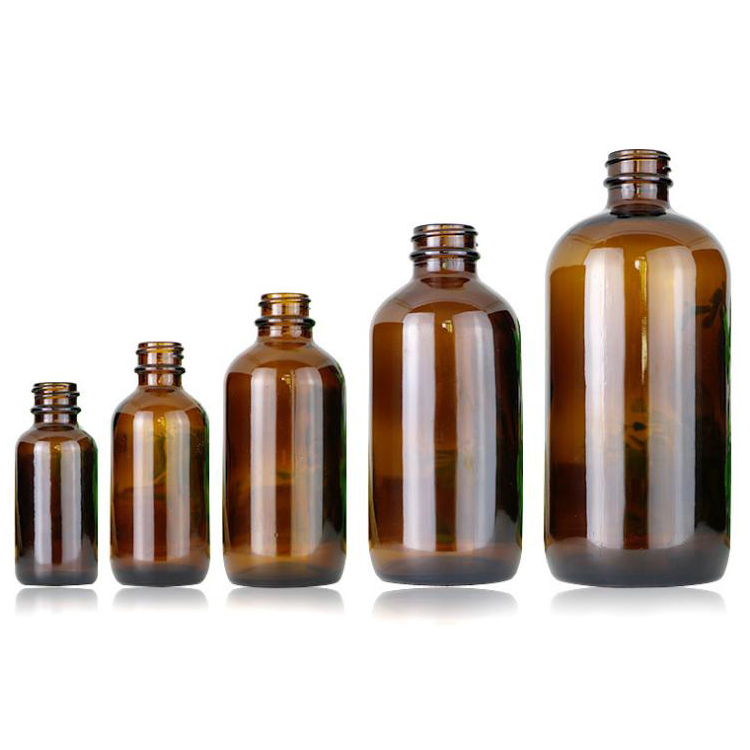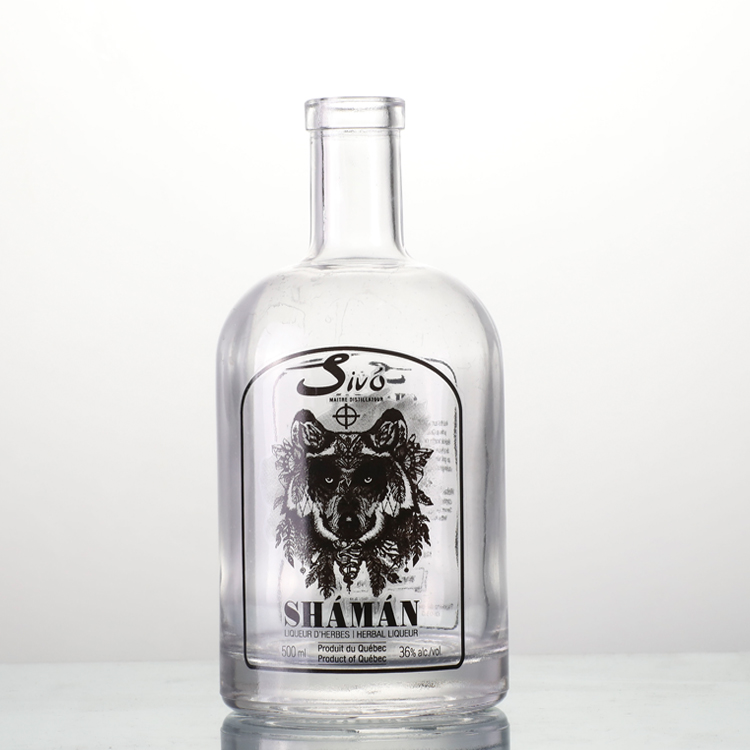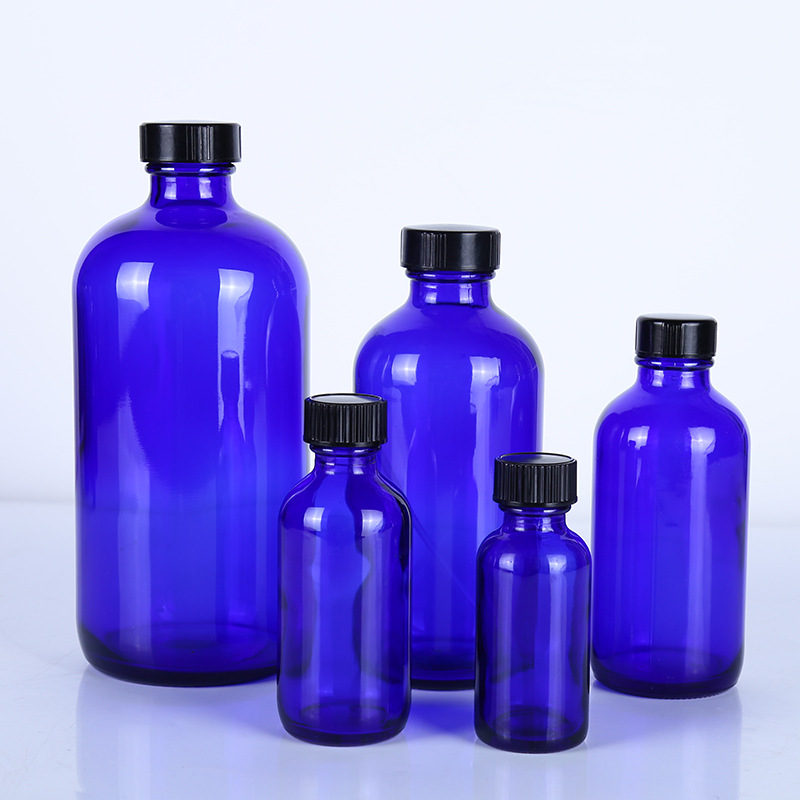Standardization system
1 Standards and standardized systems for glass bottles
rticle 52 of the Drug Administration Law of the People’s Republic of China stipulates: “Packaging materials and containers in direct contact with medicines must meet the requirements for pharmaceutical use and safety standards.” Article 44 of the Implementation Regulations of the Drug Administration Law of the People’s Republic of China states: The management measures, product catalogs, and pharmaceutical requirements and standards for pharmaceutical packaging materials and containers are formulated and published by the drug regulatory department of the State Council. “According to the requirements of the aforementioned laws and regulations, the State Drug Administration has organized in batches since 2002. Formulated and issued 113 standards for pharmaceutical packaging containers (materials) (including 2004 planned release standards), including 43 standards for medicinal glass bottle packaging containers (materials), and the number of standards accounted for 38% of the total drug packaging village standards. The standard scope covers pharmaceutical glass bottle packaging containers for various injection forms such as powder injections, water injections, infusions, tablets, pills, oral liquids and lyophilized, vaccines, blood products and other dosage forms. A relatively complete and standardized medical glass bottle standardization system has been initially formed. The formulation and release of these standards, the replacement of medicinal glass bottles and containers, the improvement of product quality, the assurance of the quality of medicines, the acceleration of integration with international standards and the international market, the promotion and regulation of the healthy, orderly, and rapid development of the Chinese pharmaceutical glass industry , Has a significant meaning and role.
Medicinal glass bottles are packaging materials that are in direct contact with pharmaceuticals. They occupy a large proportion in the field of pharmaceutical packaging materials, and have irreplaceable properties and advantages. Their standards have a crucial impact on the quality of pharmaceutical packaging and industry development.
Medicated system
2 Standardized system for medicinal glass bottles
According to the State Drug Administration’s standards for formulating pharmaceutical packaging materials divided by material, one material (variety) and one standard, there are 43 standards for medicinal glass bottles that have been issued and are to be released. It is divided into three categories according to the standard type. There are 23 product standards in the first category, of which 18 have been issued, and 5 are planned to be released in 2004; 17 standards of the second type test method, of which 10 have been released, and 7 are planned to be released in 2004. There are 3 basic standards of the third category, 1 of which has been published, 2 to be released in 2004. There are 23 types of product standards in the first category, which are divided into 8 types according to product types, including “Molded Injection Bottles” 3 “Controlled Injection Bottles” 3 “Glass Infusion Bottles” 3 “Mold Pharmaceutical Bottles” 3 “Tube Pharmaceutical 3 items of “Bottles”, 3 items of “Controlled Oral Liquid Bottles”, 3 items of “Ampoules” and 3 items of “Glass Medicinal Tubes” (Note: This product is a semi-finished product for processing various control bottles and ampoules).
There are three types of bonding materials, including 8 items of borosilicate glass. Borosilicate glass includes α = (4 ~ 5) × 10 (-6) K (-1) (20 ~ 300 ℃) neutral glass and α = (3. 2 ~ 3. 4) × 10 (-6) K (-1) (20 ~ 300 ° C) 3.3 Borosilicate glass. This type of glass is made of international neutral glass, which is also commonly referred to as Class I glass or Class A material. There are 8 items of low borosilicate glass, and the low borosilicate glass is α = (6.2 to 7. 5) × 10 (-6) K (-1) (20 to 300 ℃). This type of glass material is China’s unique quasi-neutral glass that cannot be in line with international standards. It is also commonly referred to as Class B material. Soda-lime glass 7 items, soda-lime glass is α = (7.6 to 9. 0) × 10 (-6) K (-1) (20 to 300 ℃), this type of glass material is generally vulcanized, and the surface is water resistant Performance reaches level 2.
There are 17 standards for the second type of inspection methods. These inspection method standards basically cover various inspection items such as the performance and indicators of various types of pharmaceutical glass bottles. In particular, the test of glass chemical properties has added new water resistance performance in accordance with ISO standards The detection of alkali and acid resistance provides more, more comprehensive and scientific detection methods for the identification of chemical stability in order to adapt the various products of medicinal glass bottles to drugs of different properties and dosage forms. Ensuring the quality of medicinal glass bottles and thus the quality of medicines will play an important role. In addition, detection methods for the leaching amount of harmful elements have been added to ensure the safety of pharmaceutical glass bottles. The test method standards for medicinal glass bottles need to be further supplemented. For example, the test method for alkali-resistant stripping resistance of ampoules, the test method for breaking force, and the test method for resistance to freezing shock all have an important influence on the quality and application of pharmaceutical glass bottles.
There are 3 basic standards in the third category. Among them, “Classification and Test Methods of Medical Glass Bottles” refers to ISO 12775-1997 “Classification and Test Methods of Glass in Normal Large-Scale Production”. Bottle composition classification and test method standards have a clear definition to distinguish glass materials from other industries. The other two basic standards limit the harmful elements of glass materials, lead, cadmium, arsenic, and antimony, to ensure the safety and effectiveness of various types of medicines.
Characteristics of medicinal bottles

3 Characteristics of the medicinal glass bottle standard
The pharmaceutical glass bottle standard is an important branch of the standard system for pharmaceutical packaging materials. Since the medicinal glass bottles are in direct contact with the medicines, and some of them need to be stored for a long time, the quality of the medicinal glass bottles is directly related to the quality of the medicines and involves human health and safety. Therefore, the standard of medicinal glass bottles has special and strict requirements, which are summarized as follows:
More systematic and comprehensive, which enhances the selectivity of product standards and overcomes the lag of standards to products
The same product identified by the new standard is based on the principle of formulating different standards based on different materials, which greatly expands the scope of the standard, enhances the applicability and selectivity of various new drugs and special drugs to different glass materials and different performance products, and changes Standards in general product standards lag behind product development.
For example, among the 8 types of medicinal glass bottle products covered by the new standard, each product standard is divided into 3 categories according to material and performance, the first category is borosilicate glass, the second category is low borosilicate glass, and the third Class is soda lime glass. Although a certain product of a certain type of material has not yet been produced, standards for this type of product have been introduced, which solves the problem of lagging in the production of standard products. Various types of drugs with different grades, different properties, different uses and dosage forms have more flexibility and greater choice for different types of products and standards.
Clarified the definition of borosilicate glass and low borosilicate glass. The international standard ISO 4802. 1-1988 “Water Resistance of Glassware and Glass Containers’ Inner Surfaces. Part 1: Determination and Classification by Titration.” Glass) is defined as glass containing 5 to 13% (m / m) of boron trioxide (B-2O-3), but ISO 12775 “Classification of glass composition and test methods for normal mass production” issued in 1997 The definition of borosilicate glass (including neutral glass) contains boron trioxide (B-2O-3) greater than 8% (m / m). According to the 1997 international standard for glass classification principles, the glass material of about 2% (m / m) of B-2O-3, which has been widely used in the Chinese pharmaceutical glass bottle industry for many years, should not be called borosilicate glass or neutral glass. The test proves that some of the glass particle water resistance and inner surface water resistance tests of these materials fail to reach Level 1 and HC1, or they are between the edges of Level 1 and Level 2. Practice has also proven that some of these types of glass will have a neutral failure or peeling in use, but this type of glass has been used in China for many years. The new standard retains this type of glass and specifies its B-2O- The content of 3 should meet the requirements of 5-8% (m / m). It is clearly defined that this type of glass cannot be called borosilicate glass (or neutral glass), and it is named low borosilicate glass.
Actively adopt ISO standards. The new standards are in line with international standards. The new standards fully refer to the ISO standards and the industrial standards and pharmacopoeia of the United States, Germany, Japan and other advanced countries, and combine the actual conditions of the Chinese pharmaceutical glass bottle industry from the two aspects of glass types and glass materials Reached international standards.
Glass material types: There are 4 types of glass in the new standard, including 2 types of borosilicate glass, including 3.3 borosilicate glass [α = (3. 3 ± 0. 1) × 10 (-6) K (-1) ] And 5.0 0 neutral glass [α = (4 to 5) × 10 (-6) K (-1)], low borosilicate glass [α = (6.2 to 7. 5) × 10 (-6 ) K (-1)] 1 type, soda-lime glass [α = (7.6 ~ 9. 0) × 10 (-6) K (-1)] 1 type, so there are 4 types of glass by material.
Because soda lime glass includes a large number of neutralized surface treatments in actual production and application, it is divided into 5 types according to the product. The above 4 types of glass and 5 types of glass products include international standards, US Pharmacopoeia and China-specific medical glass bottles. In addition, of the 8 products covered by the standard, only ampoules have developed 2 standards, “borosilicate glass ampoules” and “low borosilicate glass ampoules,” and only one type of α = (4 to 5 ) × 10 (-6) K (-1) of 5.0 borosilicate glass without α = (3. 3 ± 0. 1) × 10 (-6) K (-1) of 3. 3 borosilicate glass It is mainly because there is no such product in the world, and the softening point of 3.3 borosilicate glass is high, which makes it difficult to seal the ampoule. In fact, the international standard only has a 5.0 borosilicate glass ampoule, and there is no 3.3 borosilicate glass ampoule and soda-lime glass ampoule. Regarding China’s unique low borosilicate glass ampoules, 5.0 borosilicate glass ampoules have not yet formed a specific period of large-scale stable production in China due to various reasons, and can only be used as a transition product. In the end, low borosilicate glass is still limited. Ampoule, develop 5.0 borosilicate glass ampoule to achieve full integration with international standards and products as soon as possible.
Glass material performance: The thermal expansion coefficient α specified in the new standard, 3.3 borosilicate glass and 5.0 borosilicate glass are completely consistent with international standards. Low borosilicate glass is unique to China, and there are no such materials in international standards. Soda-lime glass ISO stipulates α = (8 ~ 10) × 10 (-6) K (-1), and the new standard stipulates α = (7.6–9. 0) × 10 (-6) K (-1 ), The indicators are slightly stricter than international standards. In the new standard, the chemical properties of 3.3 borosilicate glass, 5.0 borosilicate glass and soda-lime glass at 121 ° C are consistent with international standards. In addition, the requirements for the chemical composition of boron oxide (B-2O-3) in the three glass types are fully in line with international standards.
Glass product performance: The product performance stipulated in the new standard, the internal surface water resistance, thermal shock resistance, and internal pressure resistance indicators are consistent with international standards. The internal stress index of the ISO standard stipulates that the ampoule is 50nm / mm, other products are 40nm / mm, and the new standard stipulates that the ampoule is 40nm / mm, so the internal stress index of the ampoule is slightly higher than the ISO standard.
Medical bottle application
Application of pharmaceutical glass bottle standards
Various products and different materials form a standardized system of cross-cuts, which provides a sufficient basis and conditions for the scientific, reasonable and suitable glass containers for various types of medicines. The selection and application of various pharmaceuticals in different dosage forms, different properties and different grades for pharmaceutical glass bottles should follow the following principles:
Chemical stability
Good and Suitable Chemical Stability Principles
The glass container used to hold all kinds of drugs should have good compatibility with the drug, that is to say, in the production, storage and use of the drug, the chemical properties of the glass container must not be unstable, and certain substances between them should not occur. Variations or ineffectiveness of medicines caused by chemical reactions. For example, glass containers made of borosilicate glass must be selected for high-end medicines such as blood preparations and vaccines, and various types of strong acid and alkali water injection preparations, especially strong alkaline water injection preparations, should also be made of borosilicate glass. The low-borosilicate glass ampules that are widely used in China are not suitable for containing water injection preparations. Such glass materials should gradually transition to 5.0 glass materials in order to be in line with international standards as soon as possible to ensure that the drugs they contain are not in use. Off-chip, not turbid, and does not deteriorate.

For general powder injections, oral preparations and large infusions, the use of low borosilicate glass or neutralized soda-lime glass can still meet its chemical stability requirements. The degree of corrosion of medicines to glass is generally liquid is greater than solids and alkalinity is greater than acidity, especially strong alkaline water injections have higher chemical performance requirements for pharmaceutical glass bottles.
Resistant to thermal degeneration
Good resistance to rapid temperature change
In the production of different dosage forms of drugs, high-temperature drying, sterilization or low-temperature freeze-drying are required in the production process, which requires that the glass container has a good and suitable ability to resist sudden changes in temperature without bursting. The resistance of glass to rapid temperature change is mainly related to the coefficient of thermal expansion. The lower the coefficient of thermal expansion, the stronger its resistance to temperature changes. For example, many high-end vaccine preparations, biological preparations and lyophilized preparations should generally use 3.3 borosilicate glass or 5.0 borosilicate glass. When large quantities of low-borosilicate glass produced in China are subjected to rapid changes in temperature differences, they often tend to explode and drop bottles. China’s 3.3 borosilicate glass has great development, this glass is particularly suitable for lyophilized preparations, because its resistance to sudden changes in temperature is better than 5.0 borosilicate glass.
Mechanical strength
Good and suitable mechanical strength
Drugs in different dosage forms need to withstand a certain degree of mechanical resistance during production and transportation. The mechanical strength of medicinal glass bottles and containers is not only related to the bottle shape, geometric size, thermal processing, etc., but also the mechanical strength of the glass material. To some extent, the mechanical strength of borosilicate glass is better than that of soda-lime glass.
The issuance and implementation of the new standards for medicinal glass bottles are necessary to establish a perfect and scientific standardization system, accelerate the pace of integration with international standards and international markets, and improve the quality of pharmaceutical packaging materials, ensure the quality of pharmaceuticals, promote the development of the industry and international trade. Will play a positive role. Of course, like the entire standard system for pharmaceutical packaging materials, there are still many issues that need to be further improved, improved, and perfected in the preliminary standard system for medicinal glass bottles, especially to adapt to the rapid development of the pharmaceutical industry and the integration of the international market. Claim. The formulation, content and indicators of standards, and the extent to which international standards are adopted and in line with the international market all require appropriate adjustments and additions during revision.
Glass bottle and tank testing standards:
Test method for stress of glass jars: ASTM C 148-2000 (2006).
Post time: Dec-06-2019


